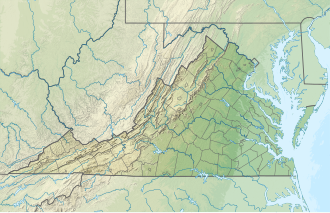| North Fork of Pound Lake | |
|---|---|
 | |
| Location | Wise County, Virginia, United States |
| Coordinates | 37°07′29″N82°37′50″W / 37.12472°N 82.63056°W |
| Type | reservoir |
| Primary inflows | North Fork Pound River |
| Primary outflows | North Fork Pound River |
| Basin countries | United States |
| Surface area | 154 acres (62 ha) [1] |
| Average depth | 19 feet (6 m) [1] |
| Max. depth | 55 feet (17 m) [1] |
| Shore length1 | 13.5 miles (21.7 m) [1] |
| Surface elevation | 1,601 feet (488 m) |
| 1 Shore length is not a well-defined measure. | |
North Fork Pound Reservoir (also known as North Fork of Pound Lake) is a reservoir in Wise County, Virginia. It was built in 1966 as authorised by the Flood Control Act of 1960 and managed by the United States Army Corps of Engineers. [2]

